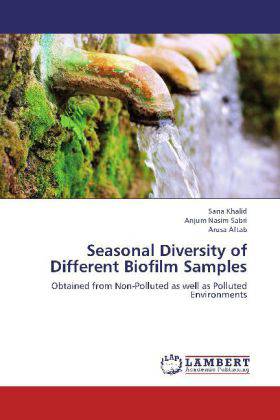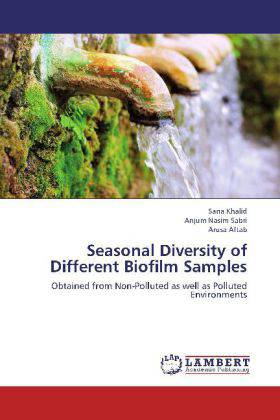
- Afhalen na 1 uur in een winkel met voorraad
- Gratis thuislevering in België vanaf € 30
- Ruim aanbod met 7 miljoen producten
- Afhalen na 1 uur in een winkel met voorraad
- Gratis thuislevering in België vanaf € 30
- Ruim aanbod met 7 miljoen producten
Zoeken
Seasonal Diversity of Different Biofilm Samples
Obtained from Non-Polluted as well as Polluted Environments
Sana Khalid, Anjum Nasim Sabri, Arusa Aftab
Paperback | Engels
€ 62,45
+ 124 punten
Omschrijving
This research work published in this book included various microbial techniques on four different parameters such as morphological, physiological, biochemical and genetic analysis of microorganisms isolated from Biofilm samples obtained from non-polluted and polluted environments. The work also included the quantitative analysis of biofilms under the supervision of Dr. Anjum Nasim Sabri. Microbial biofilms are populations that are concentrated at an interface usually solid/liquid and typically surrounded by an extracellular polymeric slime matrix. Whereas, flocs are suspended aggregates of microorganisms surrounded by an extracellular polymeric slime matrix that formed in liquid suspension. They have many of the same characteristics as biofilms. Because of the physico-chemical and biological properties, the biofilms are highly beneficial for removing organic and inorganic contaminants from the natural environments and in the modulated systems. The ecosystems, both on land and in the water, depend heavily upon the activity of bacteria. These strains can be used for future applications in soil structure and crop yield improvement under stress conditions.
Specificaties
Betrokkenen
- Auteur(s):
- Uitgeverij:
Inhoud
- Aantal bladzijden:
- 176
- Taal:
- Engels
Eigenschappen
- Productcode (EAN):
- 9783659202414
- Verschijningsdatum:
- 27/08/2012
- Uitvoering:
- Paperback
- Afmetingen:
- 150 mm x 220 mm
- Gewicht:
- 268 g

Alleen bij Standaard Boekhandel
+ 124 punten op je klantenkaart van Standaard Boekhandel
Beoordelingen
We publiceren alleen reviews die voldoen aan de voorwaarden voor reviews. Bekijk onze voorwaarden voor reviews.








